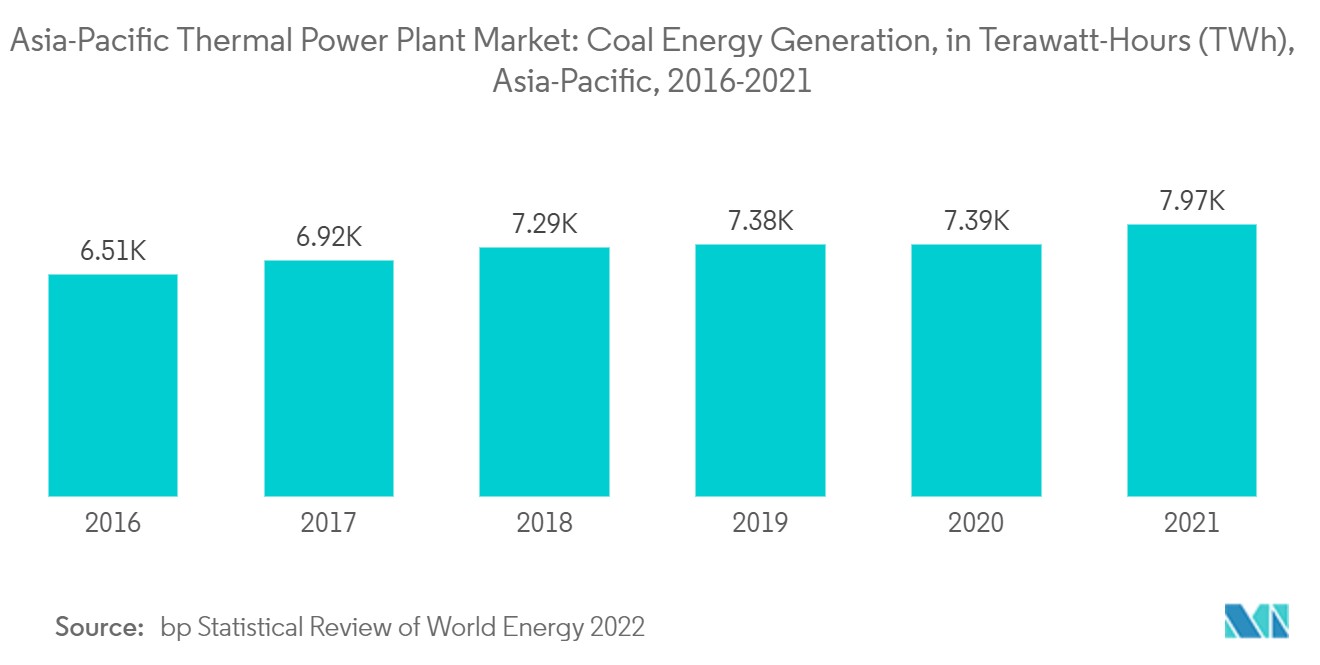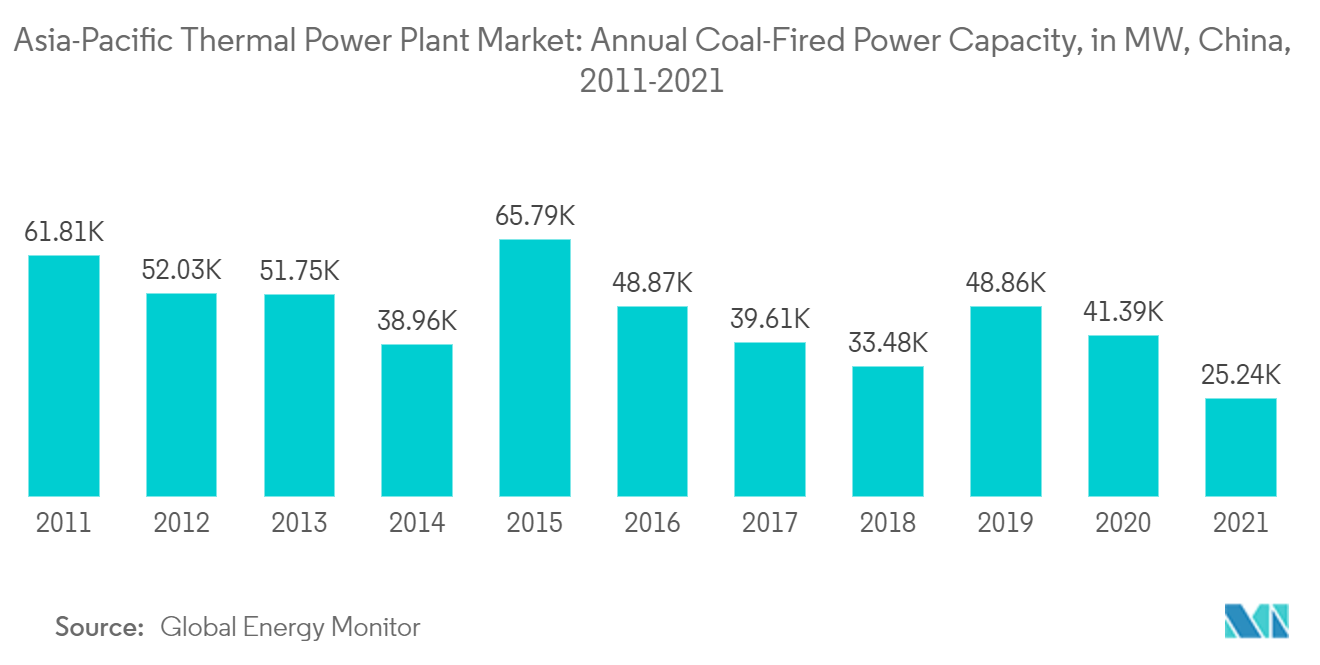Market Trends of Asia-Pacific Thermal Power Plant Industry
Coal Segment Expected to Dominate the Market
- Coal-fired power plants generate energy from the combustion of coal. The region, being the largest producer of coal, uses most of its coal to produce electricity. In 2021, the region produced approximately 129.49 exajoules of coal, which was approximately 77.27% of coal's global production.
- The major countries in the region, such as China and India, due to their rapidly increasing industrialization and urbanization, are expected to drive the thermal power plant market in the Asia-Pacific region during the forecast period. Whereas Japan, after the 2011 tsunamis, had to close down most of its nuclear power plants, which made Japan use coal and natural gas as a significant source of energy generation.
- Asia-Pacific produced 7965.6 terawatt-hours (TWh) of total electricity in 2021, which was more than the region did in 2020 (7387.7 TWh). The increase in energy generation from coal reflects the growing usage of coal in the region. Power-generating companies frequently use coal because it is available and affordable in the area.
- The Indonesian government will continue to build coal-fired power plants despite a USD 20 billion deal with the G7 group of industrialized countries to help it transition to cleaner energy sources. Nevertheless, Indonesia's government will allow the construction of new coal plants with a combined capacity of 13 gigawatts, which have already been tendered out, according to the country's 10-year energy plan for 2021-2030. Moreover, a regulation issued in 2022 by President Joko Widodo permitted the construction of captive coal plants, which were to be constructed for the purpose of supplying specific industries rather than feeding into the electricity grid.
- Hence, owing to the above points, the coal segment is likely going to dominate the Asia-Pacific thermal power plant market during the forecast period.

China Expected to Dominate the Market
- China has the largest population, because of which there is a constant increase in energy demand that requires an increasing number of industrial operations, and the continually growing demand for power supply in the residential regions of the country is expected to drive the thermal power plant market.
- During the year 2021, China added over 25 gigawatts of coal power capacity to its electricity grid, reflecting the government's commitment to reach carbon neutrality by the year 2060.
- As of May 2022, China had around 54 nuclear power reactors with a combined capacity of 52.1 GWe. China generated about 407 TWh of electricity, representing about 5% of the total electricity generation in the country. The country plans to expand its nuclear reactor fleet in the coming years. As of May 2022, China had around 19 reactors with a combined capacity of 21.01 GWe under construction, and more than 36.9 GWe are in the planned phase.
- In 2021, the total electricity generation in China was 8534.3 terawatt-hours (TWh), higher than the energy production of 2020 (7779.1 TWh). The increased electricity generation in the country exhibits a conventional form of generating electricity, which is more economical and fulfills all the country's raw material requirements. This is expected to drive the Asia-Pacific thermal power plant market.
- The country's gas production industry is booming at a reasonable rate, which is likely to drive the gas-fired power plants in the country. In 2021, China produced 209.2 billion cubic meters (bcm) of natural gas, which was higher than what was produced in 2020, 194 billion cubic meters (bcm), and the country also saw a rise in the energy generated from the gas-fired plants in the same year.
- Moreover, China is the largest importer of natural gas globally, and as the nation tries to reduce electricity generation through coal-fired power plants, the demand for natural gas increases to meet the energy requirements. For example, in February 2021, General Electric announced the start of commercial operation for the Junliangcheng Power Plant in Tianjin City, China, where the company provided power generation equipment for the new 661 megawatt combined heat and power plant, which replaces the existing coal-fired power plants.
Hence, owing to the above points, China is expected to dominate the Asia-Pacific thermal power plant market during the forecast period.


